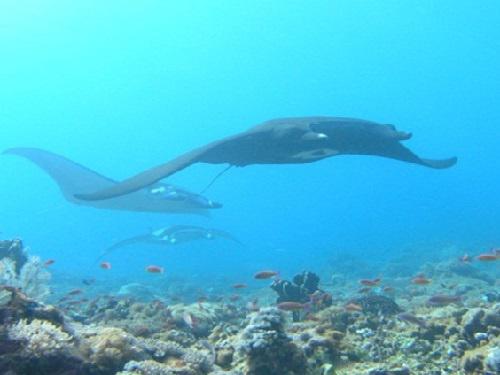Benjamin Wainwright
The aim of the project is to uncover patterns of genetic connectivity and its implications for potential marine conservation strategies in Indonesia.

A typical coral reef, North Sulawesi, Indonesia.
A wealth evidence that suggests resilient marine ecosystems require intact biological connectivity to allow the reseeding of populations after disturbance. The ability of reefs to recover after disturbance and adapt in the face of new stresses depends critically upon the supply of larvae or propagules that are available as recruits. Without this influx of new recruits there is no connectivity. Even if a particular reef is well managed and protected changes in the surrounding environment can adversely affect the number of recruits available reducing resilience and diversity. Maintenance of connectivity is not only important for the preservation of biodiversity and ecological integrity, but also for fisheries, tourism and recreation.
This study will look at 12 broadcast spawning invertebrates and 2 marine angiosperms. These 14 taxa have a wide range of dispersal potentials ranging from 12hrs to 210 days allowing them to act as potential model species for organisms that have similar life histories and dispersal potentials. Looking at a diverse range of dispersal potentials will accurately highlight the connectivity throughout the archipelago. Determining connectivity within the marine environments is one of the many crucial steps that need to be identified in order for a MPA to be successful. Despite this recognition, studies of connectivity in Indonesia are severely lacking.
Traditionally in terrestrial environments mark and recapture studies have been utilised to assess and assign individuals to populations allowing dispersal and thus connectivity to be measured with relative ease. Direct methods, however, are nearly impossible to use reliably in the marine environment where dispersal is predominantly via planktonic larvae. Indirect methods that utilise the organisms DNA have been developed (e.g., microsatellite markers). The DNA sequence acts as a unique identity tag allowing individuals to be assigned to populations thus allowing connectivity to determined allowing priority areas for conservation to be identified.